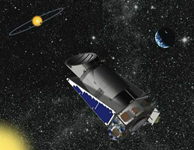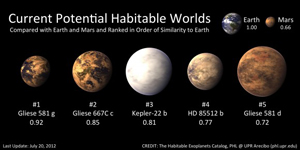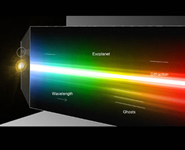    |
||
 |
The Hunt for Earth 2: |
Purchase Tickets Season Tickets for this event are available at 503-232-2300 or online here! |
Dr. Gibor He has written numerous review articles, along with well over 100 technical publications. GB was awarded a Miller Research Professorship in 1997, and became a Sigma Xi Distinguished Lecturer in 2000. He has served on committees helping to award major NASA and NSF grants and projects, and awarding time on the (world's largest) Keck telescopes. He is increasingly involved in science education, and encouraging the participation of minorities in science. One such effort is service on the Board of the Chabot Space and Science Center.
|
In March 2009, a dedicated space telescope (“Kepler”) was launched to search for terrestrial planets around other stars. Before the mission we knew almost nothing about exoplanets smaller than Saturn. Kepler is sensitive to planets with orbital periods up to a year and sizes as small as Mars, meaning that it can locate potentially habitable exoplanets, and even discover a planet that might be like the Earth. The main purpose of the mission is to find out how many smaller planets there are, and learn about their sizes and distances from their stars (it cannot discern their atmospheres or surfaces). Kepler looks at stars like our Sun, and the more common smaller stars. I describe how the mission works, and highlight some of the most amazing discoveries of the first 4 years. Nearly 3000 potential planets have been found, including many in multiple planet systems. I will summarize the distribution of sizes and locations of these candidates, and talk about some very interesting examples. The most common planets may be something that we don’t have in our own Solar System: “super-Earths” which are 1.5-3 times as big as our planet. Some of these may be like our planet, some may be “water worlds”, and some may be more like Neptune. I discuss the concept of “habitability” in that context. Finding truly Earth-sized planets is harder, especially those with a comfortable temperature, but recent results include tantalizing possibilities. The Kepler mission is rapidly leading us to the conclusion that most stars have planets going around them, and the number of planets like the Earth could easily be in the billions – and that’s just in our own Galaxy! |
|